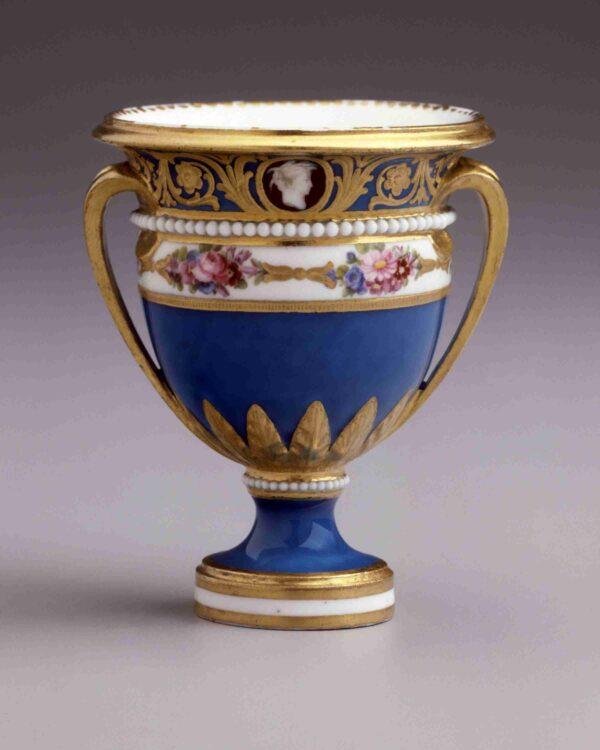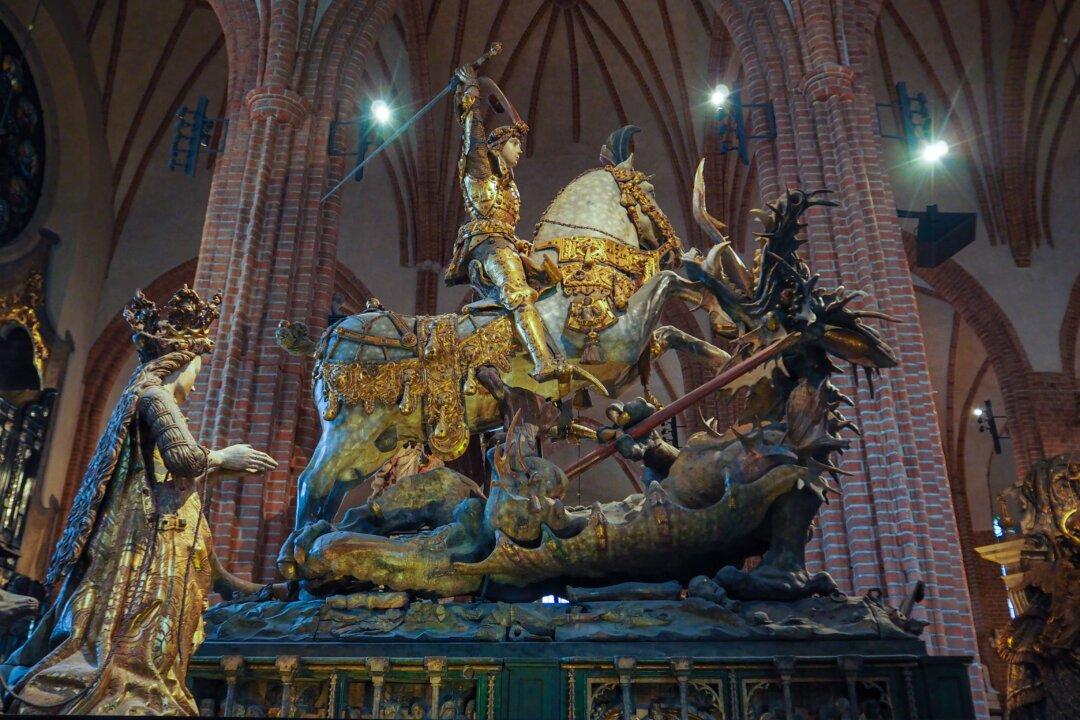Chinese artisans had already been making porcelain for thousands of years when Venetian merchant Marco Polo first brought porcelain from China to Europe in the 14th century. Polo’s discovery started Europe’s enduring love of porcelain.

European porcelain has a fascinating story to tell. “From functional pieces and decorative objects, to fine art and tableware, porcelain has been continually reinvented and played an important role in history,” Rebecca Tilles said in a press release. She is associate curator of 18th-century French and Western European fine and decorative arts at Hillwood Estate, Museum & Gardens, in Washington, D.C.
Europeans admired porcelain’s strong yet delicate, solid but translucent nature, calling it “white gold” due to its pure white color and high import costs. They began to import porcelain from China and also set about making their own. But China’s porcelain proved hard to emulate.
In China, artisans created true or hard-paste porcelain from ground micaceous rocks (rocks containing mica) mixed with kaolin clay (white china clay). Firing the mix caused the micaceous rock to vitrify, or turn glass-like, and the kaolin strengthened the ceramic form. The kaolin was key to the fine china’s whiteness, and it was also a secret that Europeans didn’t discover until the 18th century.
In the late 16th century, the Grand Duke of Florence, Francis I, created a workshop to mimic Chinese porcelain. His artisans took over 10 years to create Medici Porcelain, but the ceramic was short-lived as it proved difficult and expensive to make, and the pieces were prone to cracking due to its soft-paste formula. Artificial or soft-paste porcelain contains clay and ground glass and is fired at a lower temperature than hard-paste porcelain, resulting in a softer form than the latter. In addition to the basic clay, Medici Porcelain is believed to consist of glass, sand, and powdered rock crystal. Today, only around 60 Medici Porcelain pieces survive.
In the early 18th century, Saxon elector and Polish king Augustus the Strong was determined to create true porcelain. He tasked physicist Ehrenfried Walther von Tschirnhaus, along with alchemist Johann Friedrich Böttger, to find the secret element in China’s hard-paste porcelain. Augustus was so determined to make the discovery that he kept Böttger under lock and key until he came up with the correct formula.
Von Tschirnhaus died before the formula was announced, and Böttger is usually credited with having discovered the secret element, kaolin, in 1709. Augustus established the first porcelain manufactory in Europe, the world-renowned Meissen Manufactory in Dresden, Saxony, in Germany. When Augustus died in 1733, he had amassed 29,000 pieces of Chinese and Japanese porcelain, and some 8,000 pieces from his collection still remain in Dresden.
Visitors to “The Luxury of Clay: Porcelain Past and Present” exhibition at Hillwood Estate, Museum & Gardens, in Washington, D.C., can learn more about the history of porcelain, its development and spread throughout Europe, and its legacy.
Curated by Tilles, the exhibition includes more than 140 porcelain objects, the majority of which are from the collection of Hillwood’s founder, the late Marjorie Merriweather Post, who was a discerning porcelain collector. For the first time since the 1960s, rare Meissen and Du Paquier porcelain will be on display from the collections of Hans Syz and Alfred Duane Pell, conserved at the National Museum of American History in Washington, D.C. Also on display are Post’s pieces from Sèvres, Imperial Russian porcelain, and diplomatic gifts between Russia and Western European countries, to name a few.

One exhibition highlight is an 18th-century hard-paste porcelain “soldier” vase (one of a pair) from China, featuring “famille rose” enamels (opaque pink-colored overglaze enamels). Tree peony blossoms bloom on boughs that wind around and up the vase, alongside crab tree blossoms, chrysanthemum flowers, and tassels of love-lies-bleeding, to name a few familiar flora. Most of the flora are meaningful motifs. For instance, the peony represents wealth and opulence, and the chrysanthemum symbolizes a strong life of positive energy. A lotus bud tops the lid. The Chinese believe that the lotus flower, which grows in mud before it blooms, signifies purity and righteousness.






